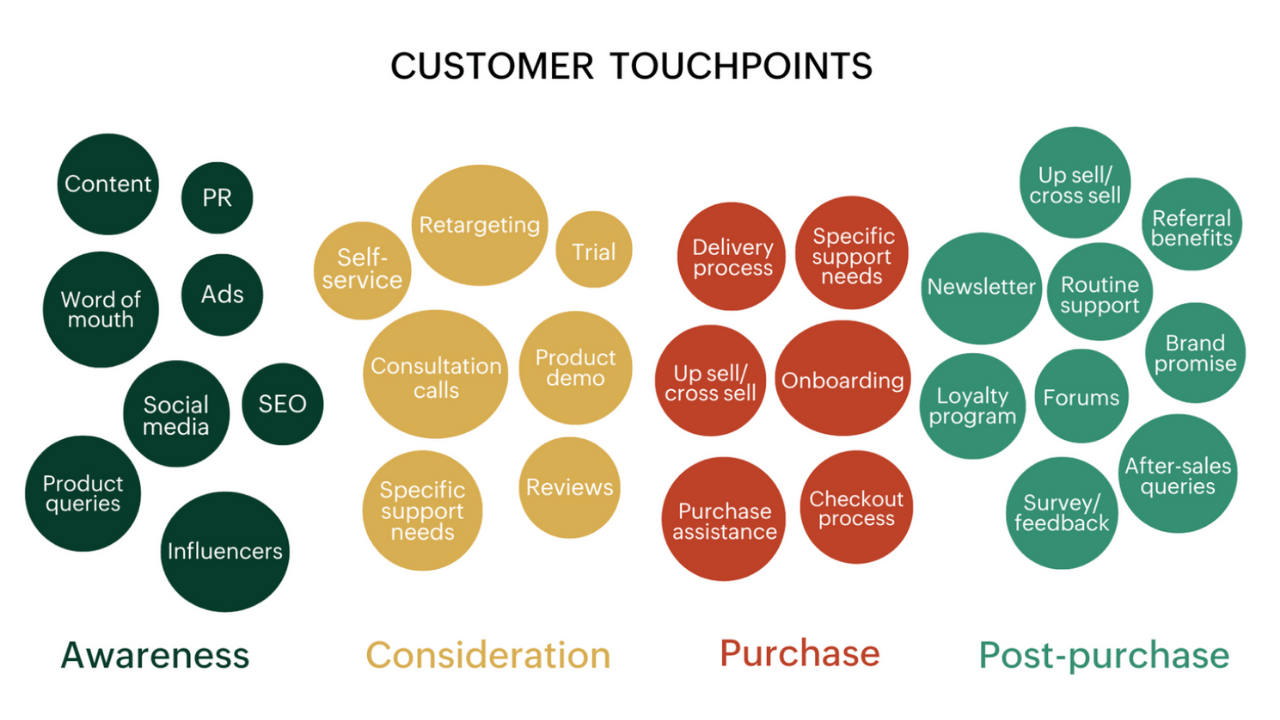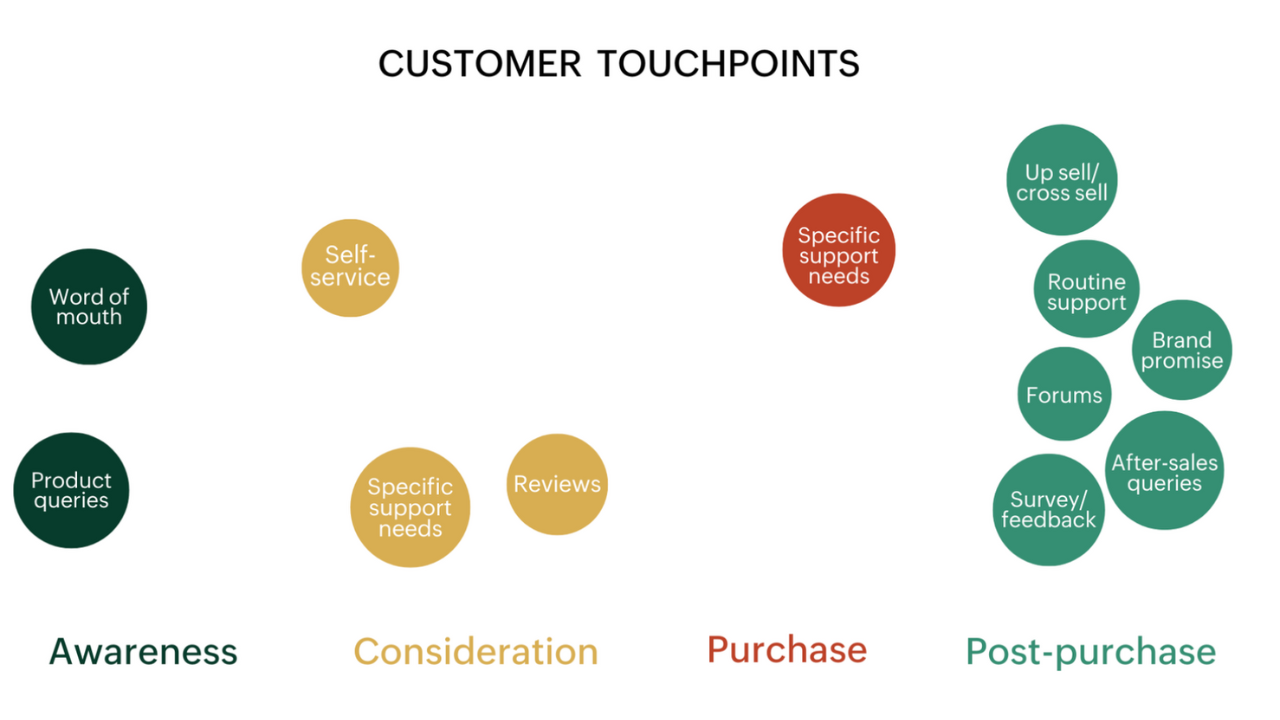- HOME
- Customer Experience
- Map the modern customer journey for optimized support
Map the modern customer journey for optimized support
- Published : December 27, 2024
- Last Updated : April 9, 2025
- 332 Views
- 5 Min Read

Every business is constantly on a mission to understand customers' behaviour. Ensuring they are acknowledged and are enjoying their brand experience remains top priority. In doing so, the brand can reap the benefits such as being favoured in this competitive market and build a lasting relationship with its customers.
What is a customer journey?
Customer journey is the entire relationship a customer has with a brand in their lifetime. It starts from the awareness stage, leading to research about the brand, numerous interactions on multiple touch-points (both online and offline), to making the purchase, followed by any post-purchase interactions for support. Meanwhile, the term "buyer's journey" is used to define a one-time action of a prospect converting into a customer post-purchase.
The five stages of a customer journey:
1. Awareness
This step involves your customer's first interest and interaction with your brand. Thus, you need to ensure you create a strong brand presence to capture the right audience's attention.
2. Consideration
In this stage, customers go through research, free-trial versions, request demonstrations, and make comparisons before choosing your brand.
3. Decision
After a satisfactory round of considering all factors, your prospects become customers by investing in your product or service.
4. Retention
This stage involves your brand ensuring all communication lines with customers are seamless and the brand's engagement is active and efficient. This results in customers viewing the brand favorably and forming long-term customer relations built on trust and loyalty.
5. Advocacy
In the final stage, your customers turn into your biggest advocates. A customer's word is taken in high regard, thus a brand that puts the extra effort in staying connected with their customers reaps the benefits of being a favorite.
Importance of customer journey mapping
Competitive times require resilient practices. Business aiming for success over the long run can benefit greatly from a happy, loyal customer base. But with increased complexity from a mix of offline and online touchpoints, handling customer data is a challenging task. Customer journey mapping is a useful tool to visualize and analyze both the visible and hidden components of your customers' experience, which helps your business deliver the following benefits:
- Greater empathy: Connect with your customers and see things from their perspective to understand their needs with clarity.
- Better experience: Study their journey to assess your customer experience (CX) process and identify any pain-points that can dampen their experience otherwise.
- Fresh opportunities: Get proactive and personalise to ensure you build lasting relations paving the way for up-sell and cross-sell opportunities.
Steps to create a customer journey map
Define your customer personas
In customer journey mapping, identifying your target audience is of utmost importance.To do so, begin by creating a customer portfolio for your brand that includes one or more personas based on your most common or regular customers. Identify their major costs, budgets, goals, pain-points, and motivations. This will help you strategise and serve your audience better. Also, sketching multiple customer personas for your customer journey map generates valuable data useful to train your generative AI tools, thereby making them more efficient.
Identify key touch-points
Customers have multiple touch-points when interacting with your brand, for example, website visits, social media apps, customer support calls, and self-service portals. A customer journey map can help you identify your customers' preferred channels of interaction. This in turn can help you analyse your communication channels' efficiency and let the conversations flow smoothly.

Map out the customer journey
Customers go through multiple stages during their interaction with a brand before making the final purchase decision. Mapping out these stages helps you analyse all the factors that have affected the customer during their customer journey, which in turn helps your business improve your customer experience and take steps to improve them if needed. While CX maps are different from customer journey maps, they both play an important role in identifying key areas and highlight scope for improvement.
Analyse customer emotions
Empathising with your customer helps you understand how they might feel at each stage of their customer journey. At this stage of your customer journey mapping process, gathering and analysing customer feedback through surveys, interviews, and data-driven insights helps you get a deeper insight on the efficiency of the customer experience, your big wins, and areas for improvement.
Collaborate internally
Once you have gathered your feedback from your customers, reviewing and discussing the details with your teams plays an essential role. At this stage, your teams can closely look at data collected from various departments, such as sales, marketing, and customer service, allowing an in-depth insight into customer experience.
Visualize your customer experience map
Use flowcharts, reports, dashboards, timelines, and more to create a customer journey map based on the research. Ensure to include key elements of your research, such as customer actions, brand actions, customer emotions, pain points, and opportunities.
Identify and use automation opportunities
This helps reduce workload and improve customer experience. For example, consider adding a self-service portal or a chatbot to your support platform and reducing response time for simpler interactions. Thereby, also reducing the load from your support agent's shoulders considerably, giving them the bandwidth to deal with more complex tasks.
Validate and refine
Change is constant, especially in the trends and patterns among a business's customer base. Conduct test surveys with your customers to stay updated. Set up internal meetings to discuss pain points and take actions to fix them.
Role of a help desk in creating a customer journey map

*Touch-points where a customer support software solution shapes your customer journey map
Centralised customer data
To understand your customer's journey, you need to identify their needs, preferences, and common patterns of customer behaviour. With a customer support software solution in place, all your customer interactions are in one place. Your support agents can access all interactions easily without the hassle of switching tabs and chasing details.
Contextual support
Good customer experience plays a vital role in business success. Therefore, analysing and adapting to your customer patterns and trends assists in offering proactive and contextual support to your customers. With customer support software, your support teams can access each customer's data, past interactions, preferred channels, and other information. A help desk solution like Zoho Desk also integrates smoothly with your CRM system to gather more information, such as the customer's position in the buyer journey.
Customer satisfaction surveys
Customer journey mapping is a valuable research exercise that allows you to assess your processes, pinpoint any problem areas, and make improvements to enhance the overall customer experience. Help desk software facilitates this process by enabling your business to gather feedback through customer happiness surveys and proactive support operations.
Access to data-driven solutions
Understanding your customers' trends, preferences, and patterns is important to ensure your business provides satisfactory support. With a customer support software solution, you'll have access to a wide range of analytics covering metrics such as average response time, agent performance, agent availability, and more.


